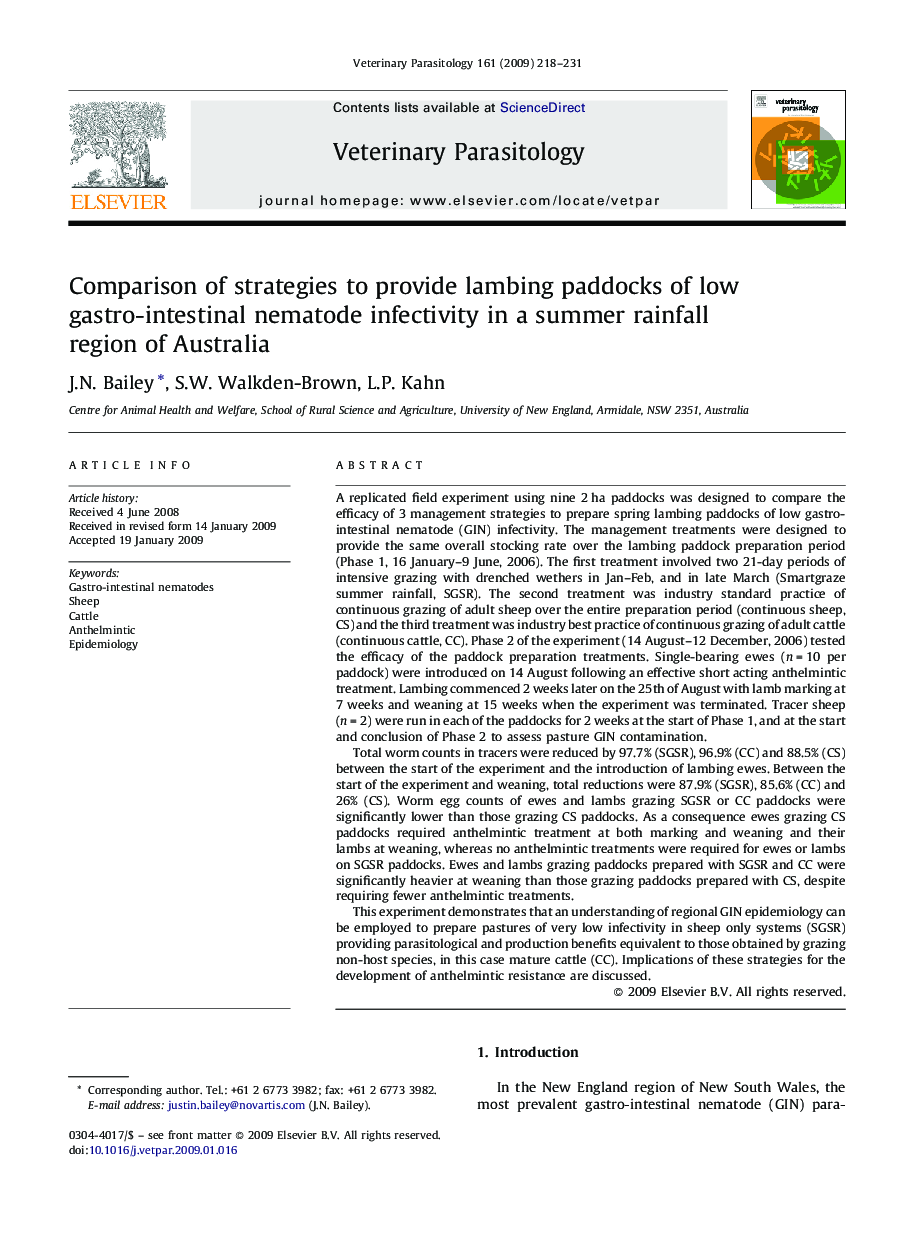| کد مقاله | کد نشریه | سال انتشار | مقاله انگلیسی | نسخه تمام متن |
|---|---|---|---|---|
| 2471140 | 1555755 | 2009 | 14 صفحه PDF | دانلود رایگان |

A replicated field experiment using nine 2 ha paddocks was designed to compare the efficacy of 3 management strategies to prepare spring lambing paddocks of low gastro-intestinal nematode (GIN) infectivity. The management treatments were designed to provide the same overall stocking rate over the lambing paddock preparation period (Phase 1, 16 January–9 June, 2006). The first treatment involved two 21-day periods of intensive grazing with drenched wethers in Jan–Feb, and in late March (Smartgraze summer rainfall, SGSR). The second treatment was industry standard practice of continuous grazing of adult sheep over the entire preparation period (continuous sheep, CS) and the third treatment was industry best practice of continuous grazing of adult cattle (continuous cattle, CC). Phase 2 of the experiment (14 August–12 December, 2006) tested the efficacy of the paddock preparation treatments. Single-bearing ewes (n = 10 per paddock) were introduced on 14 August following an effective short acting anthelmintic treatment. Lambing commenced 2 weeks later on the 25th of August with lamb marking at 7 weeks and weaning at 15 weeks when the experiment was terminated. Tracer sheep (n = 2) were run in each of the paddocks for 2 weeks at the start of Phase 1, and at the start and conclusion of Phase 2 to assess pasture GIN contamination.Total worm counts in tracers were reduced by 97.7% (SGSR), 96.9% (CC) and 88.5% (CS) between the start of the experiment and the introduction of lambing ewes. Between the start of the experiment and weaning, total reductions were 87.9% (SGSR), 85.6% (CC) and 26% (CS). Worm egg counts of ewes and lambs grazing SGSR or CC paddocks were significantly lower than those grazing CS paddocks. As a consequence ewes grazing CS paddocks required anthelmintic treatment at both marking and weaning and their lambs at weaning, whereas no anthelmintic treatments were required for ewes or lambs on SGSR paddocks. Ewes and lambs grazing paddocks prepared with SGSR and CC were significantly heavier at weaning than those grazing paddocks prepared with CS, despite requiring fewer anthelmintic treatments.This experiment demonstrates that an understanding of regional GIN epidemiology can be employed to prepare pastures of very low infectivity in sheep only systems (SGSR) providing parasitological and production benefits equivalent to those obtained by grazing non-host species, in this case mature cattle (CC). Implications of these strategies for the development of anthelmintic resistance are discussed.
Journal: Veterinary Parasitology - Volume 161, Issues 3–4, 12 May 2009, Pages 218–231